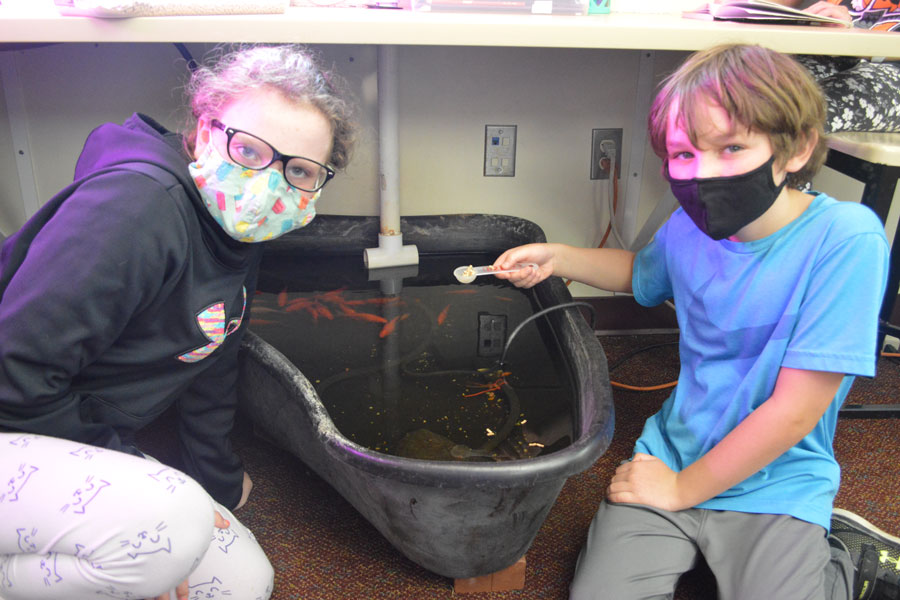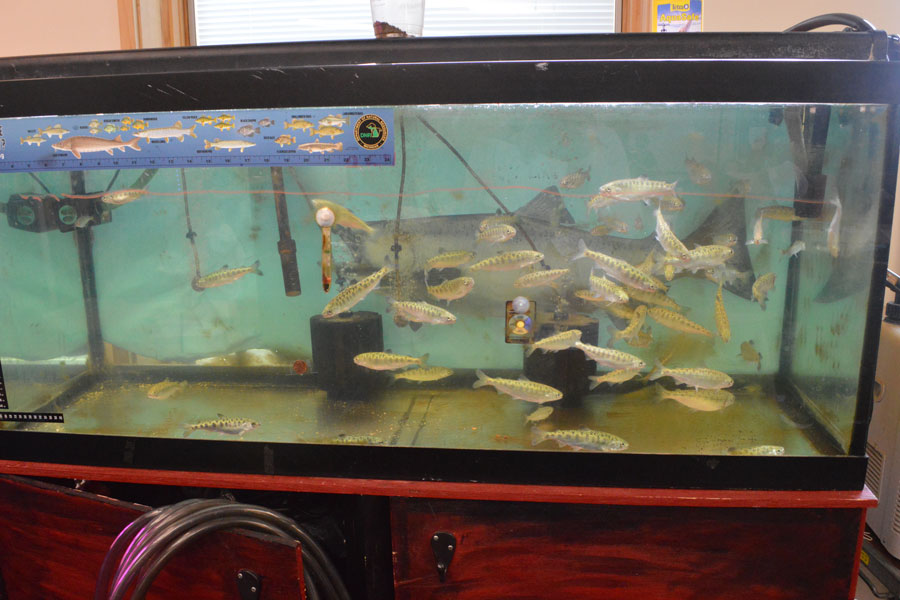Byron Center — Vegetables, nourished by a hydroponic system and goldfish poop, grow in a corner of fourth-grade teacher Dan Volkers’ classroom. Against a wall, baby chinook salmon swim in a tank, soon to be released into a nearby stream. In the center of the room, baby snapping turtles named Burrito and Taco nestle in an old terrarium.
Countryside Elementary School students have spent the school year learning about nature both inside a classroom that is home to fish habitats and plant ecosystems, and outside where wetlands teem with scaly and furry friends. Connecting students with the wild world is a priority for Volkers, whether that means heading out to catch minnows or planting garlic and strawberries in garden beds adjacent to the school.
“It’s very important for kids to be able to connect with nature,” Volkers said. “Even research shows that behavior problems decrease when you’re outside and students actually learn better when they’re outdoors than indoors.”
Plus, fresh air is especially important this school year, when students are being educated during a pandemic and masks and social distancing are the norm. “Especially since COVID hit it makes sense to get them outside and spaced out a bit more.”
Volkers is at the forefront of efforts to add even more outdoor curriculum into the already ample opportunities to embrace nature at Countryside, where the building itself is designed to resemble a farm.
“The mission with this building was to get kids outside more,” Volkers said of the school built in 2004.

Expanding Outdoor Learning
Over the years, the district has enhanced the natural outdoor environment with wetland trails traversed by a stream, gardens, benches and display cases. Most recently they added covered awnings where students can lie down on yoga mats to read.
Now staff members are planning a multi-functional outdoor pavilion. It will become a central piece to the outdoor learning opportunities. The design is planned as a 32-by-24-foot structure with a steel roof and concrete flooring, picnic tables and other seating areas. While fundraising is ongoing, they hope to have it built and ready for next fall.
“We need a centralized teaching area outside — almost a trailhead where we can teach lessons,” Volkers explained. “We even talked about parent meetings, art classes or short teaching moments, places to go read and stuff like that. It would be a great stopping point for teaching an outdoor lesson.”
One of the positives of COVID is the realization that a lot of learning is possible outside. For a while the school held every gym class outside, and students often headed out to read and draw.
“It’s forced us to get the kids outside more and we realize the value of that. It’s something we want to continue to do even when COVID’s over,” said Principal Jolynne Knowlton.
Volkers’ students can provide testimony about the benefits of outdoor learning and classroom connections. After nine months in Volkers’ class, fourth-graders Molly Rousch and Isaac Mix know a lot about growing mint, lettuce, rosemary and cilantro. They have become young aficionados of hydroponics.
“We learned plants need sunlight, water and ground to grow in,” Molly said, while showing off the growing greens.
Growing Lifelong Connections
The hydroponic system’s tubes suck goldfish poop up from a bucket filled with about 20 fish, which students feed.
“It began as an experiment just to see if we could do it,” said Volkers of the system. Managing the grow lights and tubes has required trial and error resulting in both healthy foliage and wilting leaves. The class discovered that ammonia in the water slows plant growth, but removing it makes them perk right back up.
Other projects in Volkers’ class include raising salmon from eggs through a Department of Natural Resources program called Salmon in the Classroom. They also work with Hope Gardens to grow produce in several raised bed gardens.
It’s all fun and interesting, said students who recently sat in a circle on tree trunks around a firepit in the schoolyard and shared their thoughts about outdoor learning.
“I think it’s really fun,” said Avery Porter. “We can have a fire right out here and it’s easier to pay attention. You can hear and smell nature. It’s really relaxing.
“I like the exploring and seeing all the cool things outside,” Isaac said. “It’s fun doing all sorts of experiments and helping the gardens and the school.”
“It’s nice and calm and then it’s not inside and loud,” said Diesel Grabill. “You can concentrate.”
Volkers said he hopes all these outdoor experiences help students develop a lifelong appreciation for the environment. “It just brings a better connection to nature and appreciation for life cycles and how things work outside.”
















